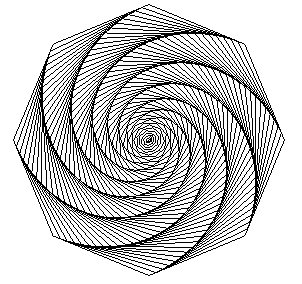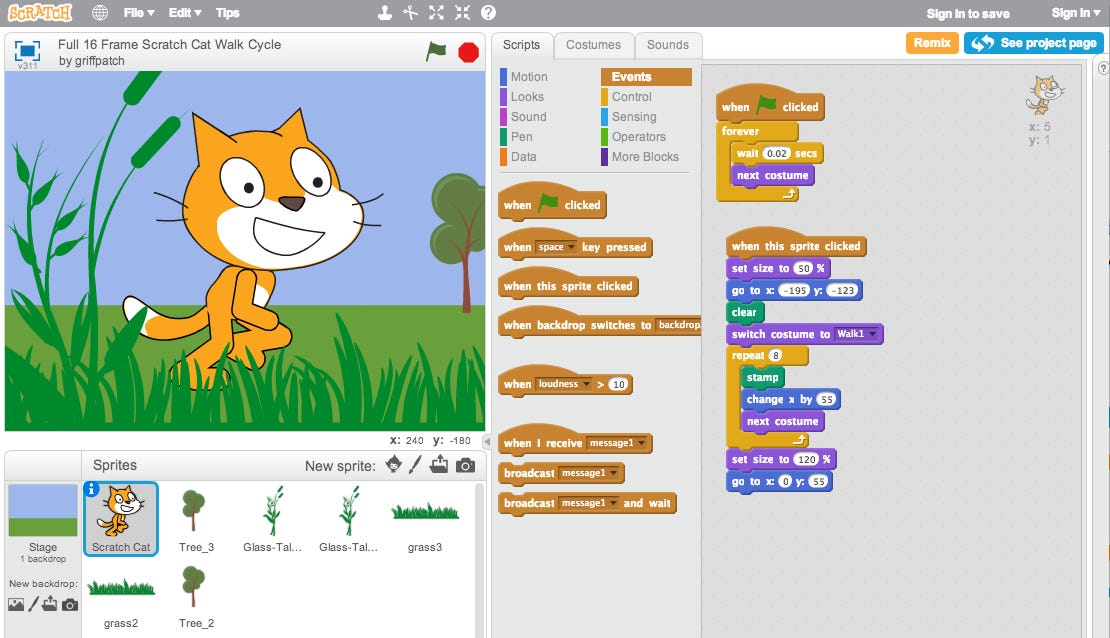Philosophical Ramblings
Wednesday, 14 February 2018
Math Relay Race
I wanted in this last blog post to share an activity I saw on my previous block. This was the "Math Relay Race", and was one of the most effective math games that I have seen. Part of the trickiness with math games is that they are either too educational as to be dry and not very fun, or they are too action-packed and lack any substantial learning. For example, I've seen Jeopardy done in two different math classes and in both cases it was a disaster. The one time I saw it work was in a very, very mature grade 9 math class. The other two classes weren't "problem" classes, but they were very excitable. Other games, such as a matching game where you had to match equations in standard form and y-intercept form were tortuously dull, and not great learning tools. The relay race seems to get the best of both worlds. The process is as follows: prepare a set of 10-20 problems in increasing difficulty (word problems are best). Figure out how many groups you will have, preferably pairs or groups of four, and have a stack ready for each group. Every group starts on the first question, and won't be given the second until they finish it (and get the right answer). Once the second question is done, they get the third, etc. Each time a group finishes a question, they write their names on the question and it gets put in a bag. At the end, a few questions are drawn from the bag and the team with the name gets a prize. The more questions you complete, the more likely you are to win. The addition of the prize puts a little healthy competition in the mix, though the groups still work independently, so the chaos remains very controlled. I saw this activity in action twice, and in both cases it was a resounding success. It it certainly something I would employ in the future, even in physics.
Curves of Pursuit
In preparation for my webinar, I came across something which
I had seen before but never knew the name of: curve of pursuit. Suppose you
have a triangle, and there was a mouse at each corner, staring directly at its neighbor
on the clockwise corner, relative to itself. Suddenly, at the exact same time,
the mice start chasing the one they are staring at. What kind of curve will be
traced out by the mice? When will they meet? This curve, as it turns out, is a
logarithmic spiral. What is interesting is that there are techniques for
approximating these curves, and can be used for making all sorts of interesting
designs. As fun as this is, it also struck me as an interesting demonstration
of a dynamic system. The mouse is chasing a moving target, which is itself
chasing a moving target. It’s an iterative system over differential time
increments. The idea of limits and dynamic systems can be demonstrated using
the drawing technique, since the finer the drawing (and hence, the more
increments), the closer the approximation to the actual curve. I found a whole
website devoted to different artsy math activities (https://www.artfulmaths.com/mathematical-art-lessons.html),
and there is a whole page devoted to drawing curves of pursuit. She also talks
about Celtic knots, symmetry, and origami. These activities seem like great
ways to fill a Friday with something fun, yet genuine mathematical and
educational.
When Students are Better at Math than You
I’ve discovered this week that if you ever want to be
humbled, coach a student for the Waterloo Math Contest. I’ve been volunteering
at HSC this winter, and one niche I’ve fallen into is running prep for students
who want to write the Fermat and Euclid math contests. The Fermat contest is
quite challenging, but doable. The Euclid, on the other hand, sometimes seems
near impossible. Questions generally fall into 7 categories:
1.
Logarithms and Exponents
2.
Functions and Equations
3.
Analytic Geometry
4.
Trigonometry
5.
Sequences and Series
6.
Circle Geometry
Although it’s not listed as a category, there is also a fair
bit on combinatorics, though I suppose that that would fall in as a combination
of functions and series. I have personally found having to prepare for these
study sessions a great challenge to my knowledge and I would encourage anyone
interested to work through some of the prep material (http://www.cemc.uwaterloo.ca/contests/euclid_eWorkshop.html)
as part of their own professional development. The hardest one by far is the
circle geometry, I still can’t solve some of those problems. Even given the
solution, I have difficulty understanding the logic.
In doing this contest prep, not only has my understanding of
math (particularly stats) sharpened, but it’s helped me know what to do when I
get a student who is smarter than me. One student I help in particular is a
true genius. When I give him a problem, he launches immediately into a proof
and it takes all my concentration to keep up with his train of thought.
Sometimes I think I catch a mistake, but often I’m wrong. It has shown me how
to make mistakes as a teacher, but not let that diminish my authority in the
subject. I think we sometimes place a burden on ourselves to know everything,
and knowing how to cope with mistakes has been a valuable learning experience
for me. I’ve also realized, even though this student is much, much smarter than
me, I still know more than he does so I don’t have to feel like I have nothing
to offer.
Learning Coding Using Games
Learning Coding Using Games
On my block, the grade 9’s would occasionally do enrichment
activities where they would code using “Scratch”, a high-level programming
software developed for students. I hesitate to call it a language since it
doesn’t really have syntax. Rather, the coding elements are put together like
lego, so there is rarely any typing involved. Even though it is really basic,
you do get some ideas of loops and conditional statements, though those exact
words aren’t used. My only reservation was that the activities were extremely
“recipe book”. In fact, we used a recipe book, called “Coding Games in
Scratch”, which gave them step-by-step instructions for completing the
different challenges. As such, even someone with absolutely no idea what they
were doing could make these codes. That being said, the Scratch platform had
lots of other creative outlets for the students and some students in particular
had way more fun that I would have guessed before we began. We were sure to
include little extra bits in the challenges that weren’t in the book, in order
to make them think.
For learning proper coding, there are other games out there
that could be recommended for a more interested/gifted student. One of my
favorites is called “Human Resource Machine”. This very funny and challenging
game has you control a little office worker by pieces together a series of
commands (again, like in Scratch) in order to perform a set of mundane tasks
such as sorting a list of numbers. What makes this special is that the whole
game is actually a perfect analogy for how computers actually work. There is
also a sequel based on parallel programming coming out this year. (http://tomorrowcorporation.com/humanresourcemachine). A free online game I’ve tried that supposedly helps you learn
Python is called “Code Combat” (https://codecombat.com)
It is not free, but I was able to play a demo. What I like about this version
is that it actually causes to type the commands, and so introduces the
important of syntax. There is also autocomplete, so it isn’t arduous. I
personally didn’t find it terribly fun, but that just may be because I’m
already an experienced coder, and it builds so progressively that there’s no
challenge or interest in the demo.
WoodenBooks
The “Wooden Books” is a series of beautifully illustrated
books addressing various fields within art, mathematics, and science. I have an
interest in Classical Education and first read “Quadrivium” from this series.
It gave me historical and artistic information on mathematics and geometry that
I made use of on my placement to enormous success in the Grade 9 geometry unit. I have also used them as supplementary material in my tutoring, again always to very positive response. Once student immediately went out and bought a set of them for herself. The information contained in these books gives not so much the utilitarian
information that the curriculum is based on, but the historical-aesthetic
context of the subject matter. Additionally, it generally draws upon a range of
Middle Eastern and Asian sources besides those of the Middle Ages and Ancient
World. The artistic material is particularly good for making geometry
activities. For example, I used the chapter on tiling to easily make the
following patterns on my computer from scratch. Each tile is actually made of
four copies of a smaller tile, which have been rotated 0, 90, 180, or 270
degrees respectively in order to made a more complicated pattern. Of course,
much more complicated patterns can be easily made from a single image with a little
more planning.
Subscribe to:
Comments (Atom)





